




Your support is critical to our success.
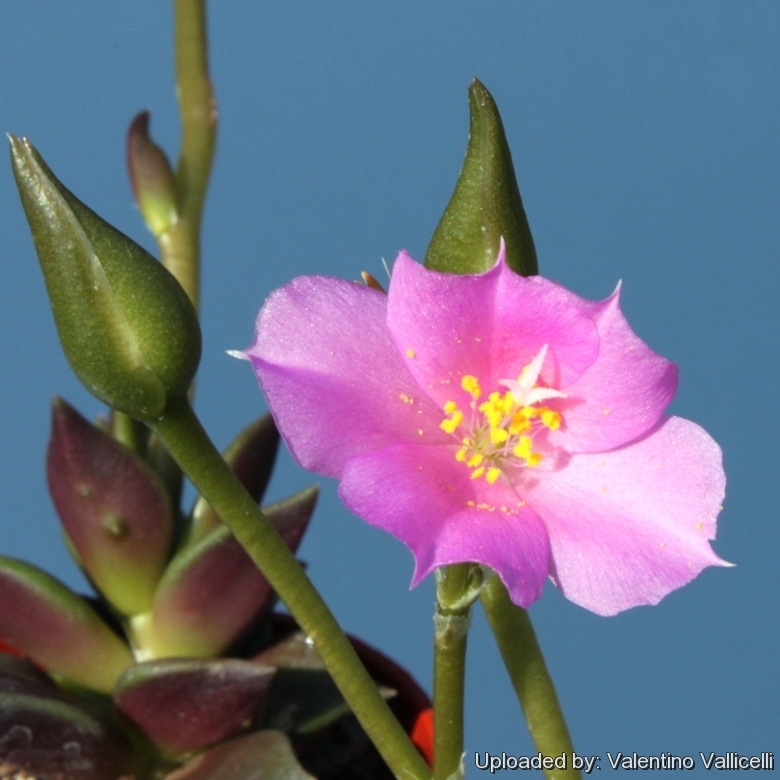
Origin and Habitat: Robertson across the Karoo to Free State in the Western Cape Province. South Africa
Habitat: It grows in arid terrains covered with pebbles and small stones often in the shade of bushes and overhanging rocks, and here are found other succulents like Euphorbia pentagona, Cotyledon tigrina and Pelargonium munitumSN|35428]]SN|35428]].
Synonyms:
- Anacampseros telephiastrum DC.
- Anacampseros varians Sweet
- Ruelingia varians Haw.
Description: Anacampseros telephiastrumSN|1314]]SN|1314]] is a low growing succulent with nice pink flowers. As the name suggests, this species resembles a Sedum of the Telephiastrum group.
Habit: Plant composed of a number of rosettes eventually forming mats. It has a caudex, if grown hard in very bright light, in very poor soil, while in shade and overfed it is a scraggly species, with attractive fat leaves.
Stems: Stout stems are freely branched and the growth eventually becomes matted.
Leaves: Very crowded, almost rosulate, ovoid or almost spherical, difformed, shortly tapering up to 2 cm long and broad, fleshy, green or brownish, often reddish on the back, hairless when mature. Stipules papery, with fringed margins. Axillary hairs filamentous, shorter than leaves.
Inflorescence: Racemes subpanicled, to 10 cm with 1-4 flowers.
Flowers: Opening in the afternoon, 3-3,5 cm in diameter, pink. Stamens numerous.
Seeds: Very much winged.
Cotyledons: 2, thick, somewhat trigonal, convex beneath, with a very short caulicule.
Bibliography: 1) Urs Eggli “Illustrated Handbook of Succulent Plants: Dicotyledons” Springer, 2002
2) Hermann Jacobsen “A handbook of succulent plants: descriptions, synonyms, and cultural details for succulents other than Cactaceae, Volume 1” Blandford Press, 1960
3) Auriol Batten, Hertha Bokelmann “Wild Flowers of the Eastern Cape Province” Books of Africa, 1966
4) Eily Gledhill “Eastern Cape Veld Flowers” Department of Nature Conservation of the Provincial Administration of the Cape of Good Hope, 1969
5) Werner Rauh “The Wonderful World of Succulents: Cultivation and Description of Selected Succulent Plants Other Than Cacti” Smithsonian Institution Press, 1984
6) Walther Haage “Cacti and succulents: a practical handbook” Dutton, 1963
7) George Don “General History of the Dichlamydeous Plants: Vol.3” 1834
8)William Henry Harvey, O. W. Sonder “Flora Capensis: Being a Systematic Description of the Plants of the Cape Colony, Caffraria, and Port Natal, Volume 2” 1862
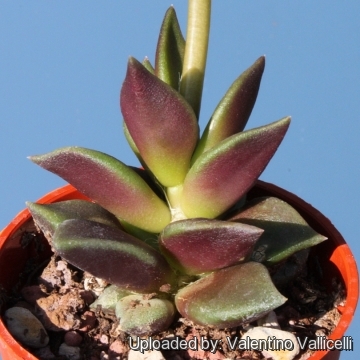
Anacampseros telephiastrum Photo by: Valentino Vallicelli
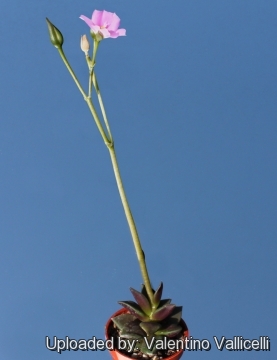
Anacampseros telephiastrum Photo by: Valentino Vallicelli
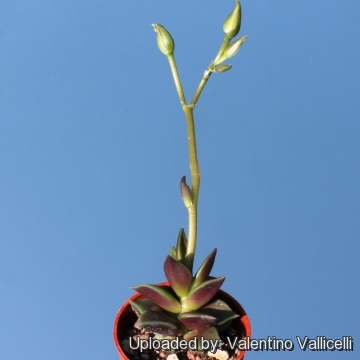
Anacampseros telephiastrum Photo by: Valentino Vallicelli
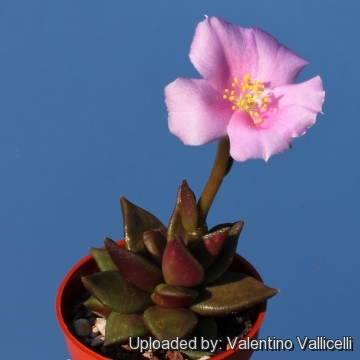
Anacampseros telephiastrum Photo by: Valentino Vallicelli

Anacampseros telephiastrum Photo by: Valentino Vallicelli
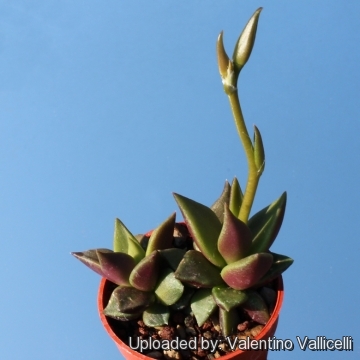
Anacampseros telephiastrum Photo by: Valentino Vallicelli
Cultivation and Propagation: Anacampseros telephiastrumSN|1314]]SN|1314]] is one of the more common species in cultivation and quite resistant to cultivation. The only things that can kill this plant are cold and overwatering. Nevertheless, it is appropriate to provide adequate growing conditions in order to obtain compact plant with many flowers.
Growth rate: Slow growing to start but does well under cultivation. They need to be moderately large (about 20 cm in diameter) before they flower.
Soils: Use a an open and free draining mineral compost with little organic matter (peat, humus) that allows therefore roots to breath (as it is rot prone). Outdoors a well-draining rocky or sandy soil is ideal.
Repotting: Repot Anacampseros telephiastrumSN|1314]]SN|1314]] once a year in order to evaluate the health of the plant and provide a larger growing space being careful not to damage the sensitive roots.
Watering: It likes a winter's rest and should be kept completely dry during the winter months. From early spring onwards the plant will begin to grow and watering should be increased gradually until late spring when the plant should be in full growth. Water regularly during the aestival growth cycle so long as the plant pot is allowed to drain and not sit in a tray of water (this plant need plenty of water) But needs to be avoided wetting the bodies of these plants while they are in sunlight. A wet plant in the sun light can cause sun burning which can lead to scars or even fungal infections and death. From late summer watering should be reduced to force the plant to go in to a state of semi dormancy, by autumn you should be back in to the winter watering regime. Keep dry with ample airflow in winter (but for outdoors cultivation it is somewhat resistant to wet conditions, too if grown in very draining substrata). In the rest period no high atmospheric humidity!! Care must be taken with watering as they tends to become swollen and untidy in growth habit if given too much water and shade.
Fertilization: Feed with a high potassium fertilizer in summer during the growing season diluted to one-fourth potency and mix into the watering can for application.
Hardiness: Keep dry at 5- 10° C in winter, but can tolerate sporadic light frost if kept on the dry side prior to, and during, cold weather. Pots may be placed outdoors during the summer months, but must be moved indoors during the winter. USDA zones 9-11
Exposition: The plant tolerates bright situations, if kept too dark they may become overly lush and greener and could be prone to rotting due to over watering. Strong but filtered light encourages flowering, but is likely to suffer from sun scorch or stunted growth if over exposed to direct sunlight during the hottest part of the day in summer. .
Uses: It is an excellent plant for container growing. It always looks good and stays small. It look fine in a cold greenhouse and frame. It do well outdoors in raised beds and terraces as well.
Pests & diseases: It may be attractive to a variety of insects, but plants in good condition should be nearly pest-free, particularly if they are grown in a mineral potting-mix, with good exposure and ventilation. Nonetheless, watch carefully for any significant decline in health. This may signal a pest problem that should be dealt with quickly in order to prevent scarring, stunting and even death.
- Red spiders: Red spiders may be effectively rubbed up by watering or misting the plants from above.
- Mealy bugs: Mealy bugs occasionally develop aerial into the new growth among the leaves with disfiguring results, but the worst types develop underground on the roots and are invisible except by their effects. Eliminate mealybug infestations by dabbing the critters with cotton swabs dipped in alcohol or by soaking the succulent roots in a systemic insecticide.
- Scales: Scales are rarely a problem.
- Rot: This species is particularly easy and accommodating, seldom suffer of cryptogamic diseases. Rot it is only a minor problem with cacti if the plants are watered and “aired” correctly. If they are not, fungicides won't help all that much.
Propagation: it is easy to propagate either through stem cuttings or seed.
| Your Actions | |
|---|---|
| Back to Anacampseros index | |
| Back to Portulacaceae index | |
 |
Back to Succulents Encyclopedia index |
Privacy stantement - Terms and conditions - How to cite - About us - Feedback - Donate



